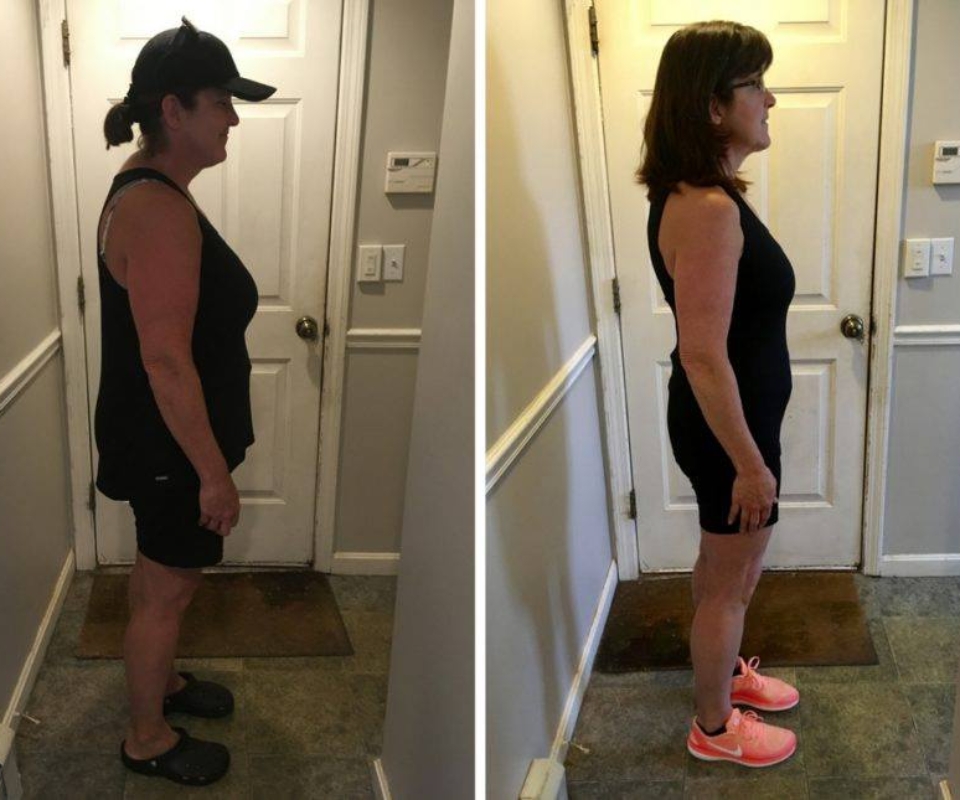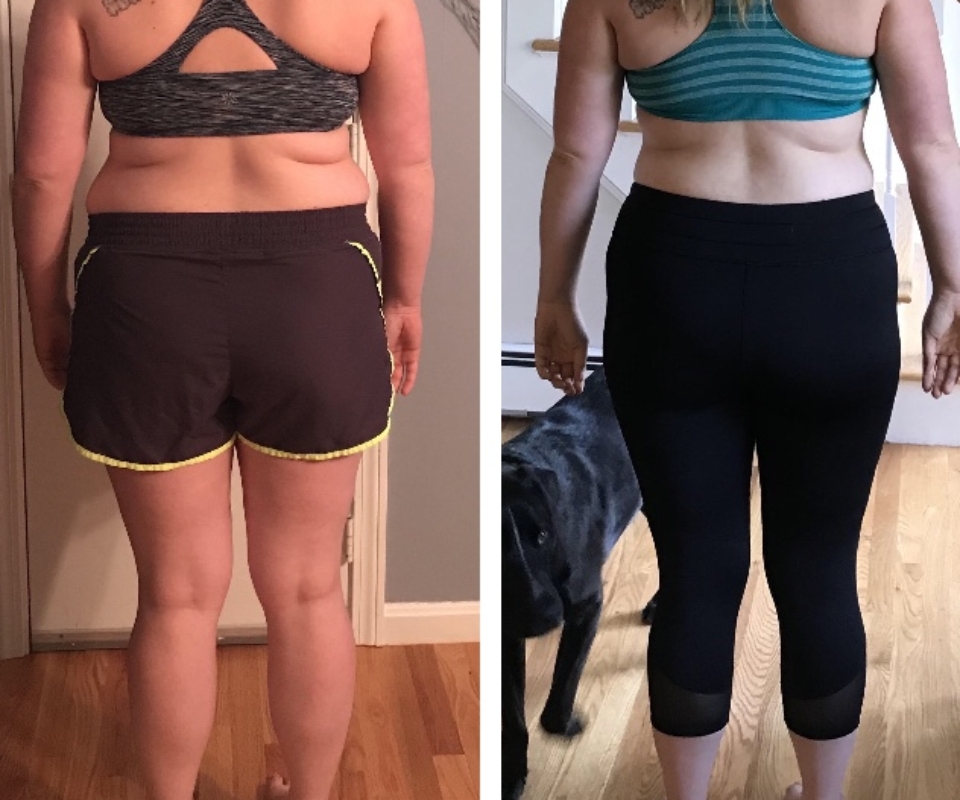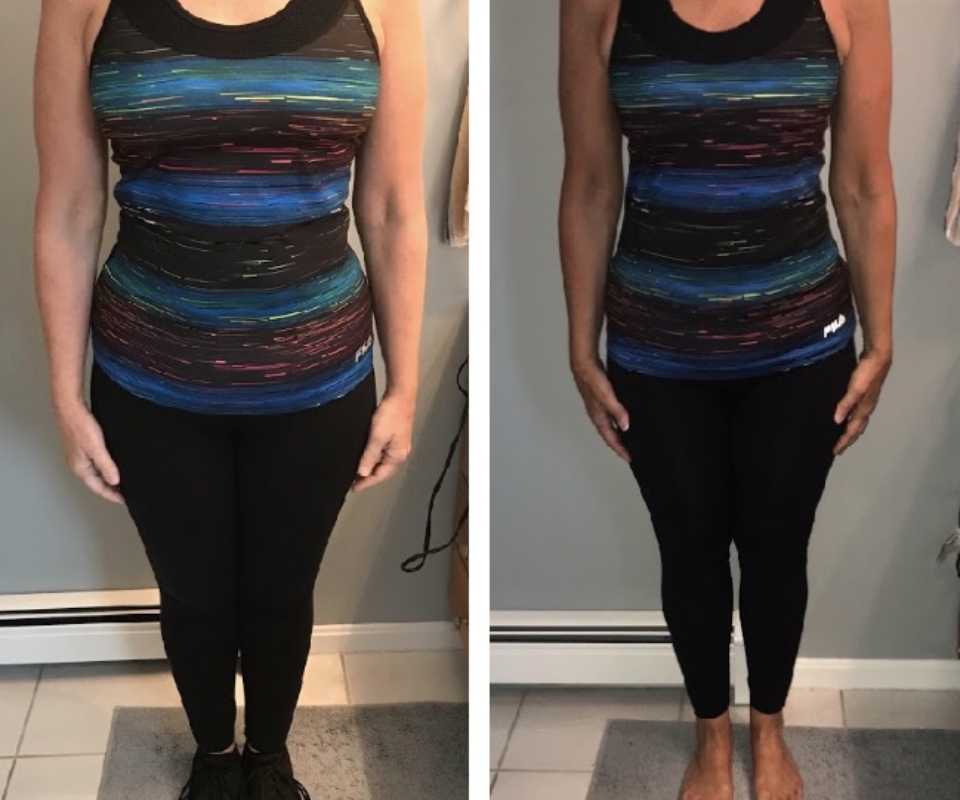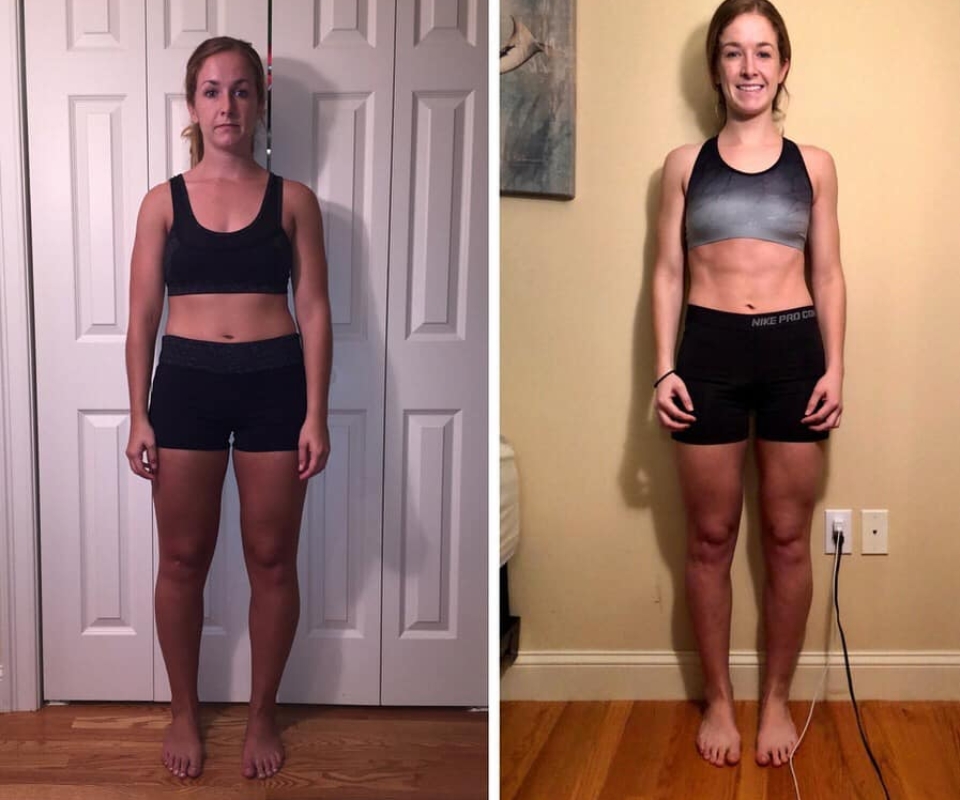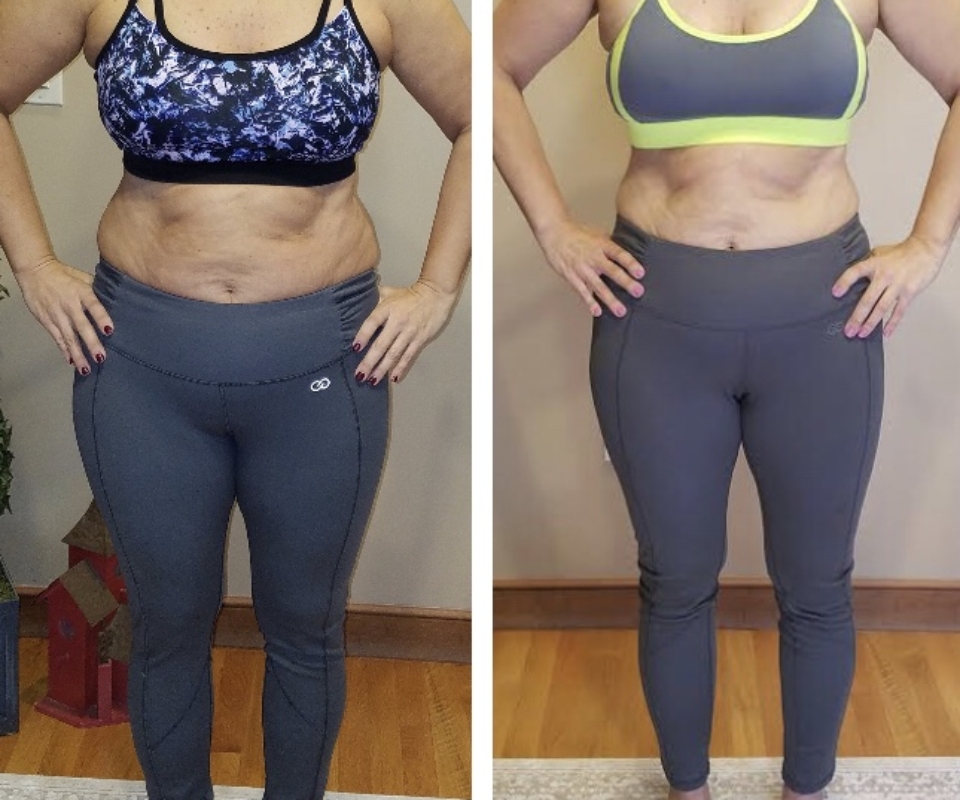Most women who hire me say “toning up” is their number one goal. Unfortunately, few women are taught what this really means, or how to achieve the look. The reality is, how “toned” you are boils down to:
1) How much muscle you’ve developed
2) How much body fat you carry
So your best bet for looking more toned is increasing muscle (if you’re worried about getting “bulky”: keep reading) and losing fat—which is NOT accomplished by:
✕ Doing hours of cardio
✕ Reducing carbs
✕ Doing high rep sets
✕ Going to boot camps
✕ Cutting rest periods
✕ Doing spin classes
You’ll learn why in a moment.
But there’s something I need to clarify, first: it’s incredibly hard to lose fat while building muscle (the “secret” to looking toned). The most efficient route is breaking the journey up into two phases:
Phase 1: Maintain muscle while losing fat
Phase 2: Maintain fat* while developing muscle
*Meaning your body fat percentage doesn’t go up.
Most women who hire me need to focus on Phase 1, first. If you jump the gun and go to Phase 2 before you’ve lowered your body fat percentage, you risk putting on an unnecessary amount of body fat. Naturally, this is something we want to avoid (for health reasons alone).
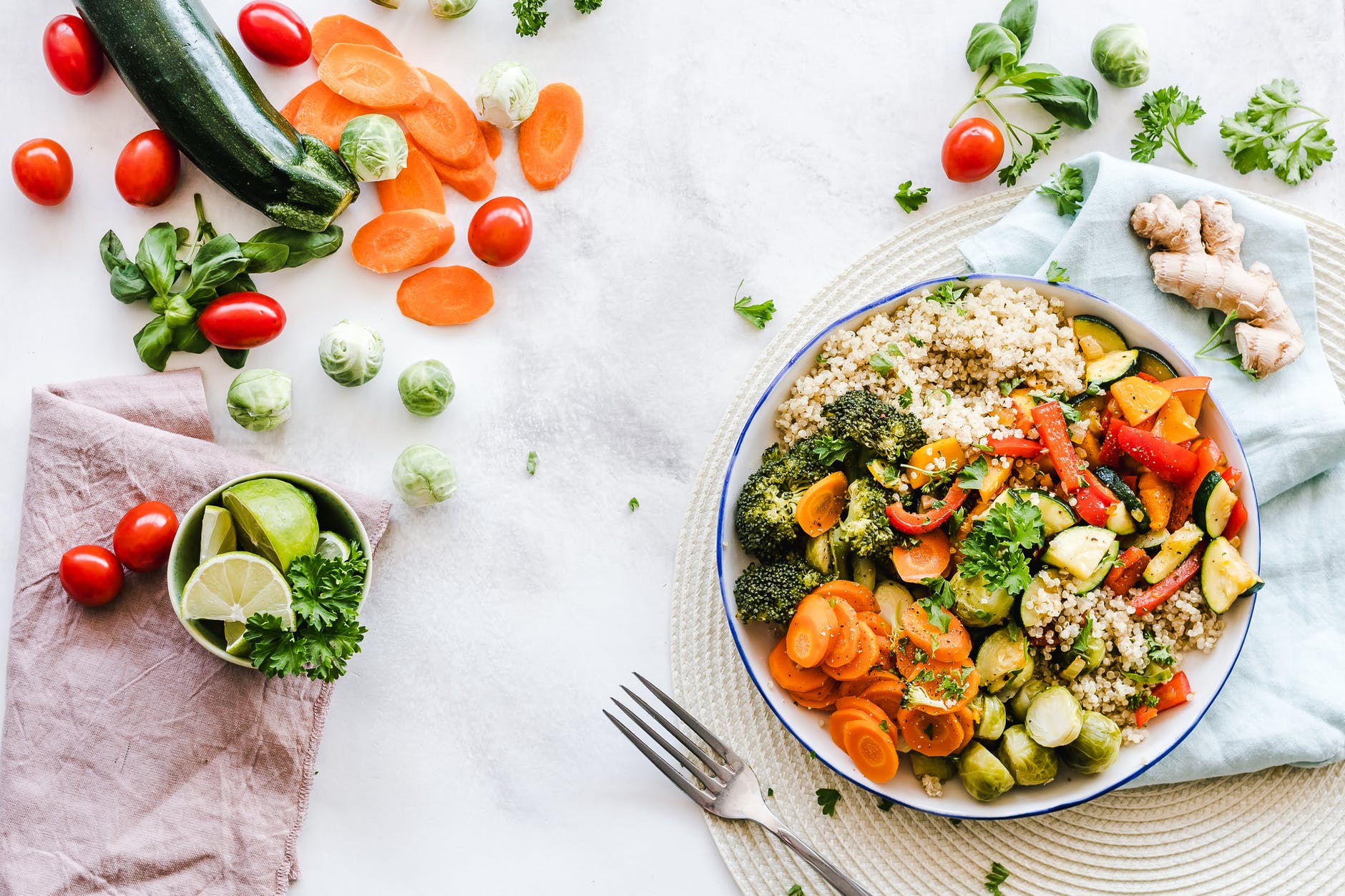
Fun fact: your nutrition is the number one indicator of whether or not you’ll successfully tone up—and “eating healthy” isn’t enough
To summarize: a toned look is achieved by reducing body fat and developing muscle—similar to chipping away at a sculpture. In most cases, this is best done in two phases: a fat loss phase and a “building phase.”
Today, we’ll focus on the fat loss phase (where most women need to start*).
*Unless you’re already at an impressively low body fat percentage.
The most efficient way to lose fat (and it’s not even close) is to use:
1) Nutrition to facilitate weight loss
2) Workouts to ensure its fat (not muscle)
In other words, your diet is primarily responsible for weight loss, and your workouts—approached correctly—help ensure you lose fat, specifically—which makes a MAJOR visual difference. Take it from these clients:
Ready to dive into how they did it? And learn exactly how you can tone up, too?
Let’s do it:
1) Prioritize strength training
This isn’t to say cardio isn’t valuable, or you shouldn’t do it. But it’s largely a waste of time for fat loss goals, as it doesn’t maintain muscle nearly as well as strength training does. To use a specific example:
A) We’ll pretend I’m two hundred pounds, 15% body fat, and want to lose ten pounds—and “use” cardio to do it. I’ll likely lose five pounds of fat and five pounds of muscle, reducing my body fat percentage to 13.1% (not bad).
B) Now, we’ll pretend strength training is prioritized when achieving the same goal: losing ten pounds. I’ll likely lose nine pounds of fat and one pound of muscle, reducing my body fat percentage to 10.5%. Obviously, I’ll look more toned.
2) Include more low rep sets
High rep sets don’t tone your muscles. This is a non-scientific, outdated myth gym teachers and Pilates instructors spread in the 80’s. If it were true, you’d be able to transform your body with a soup can and 50+ reps sets.
We know better now.
The reality is, you need to utilize a variety of rep ranges in your strength training workouts to maintain and develop muscle. This tells your muscles, “Hey, we still need you” while dieting (and helps you achieve a toned look).
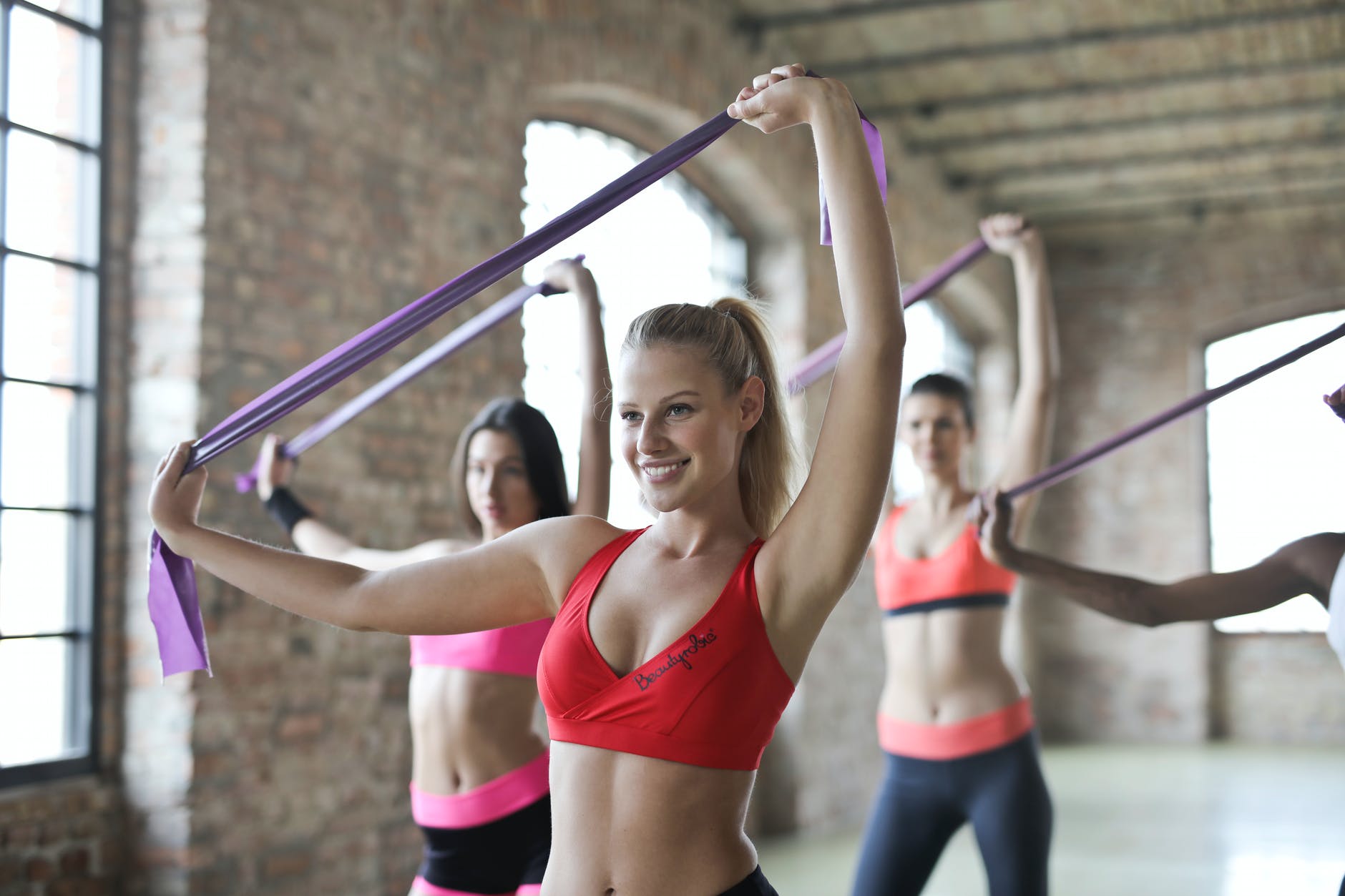
Band workouts aren’t better for toning than hard, heavy workouts. In fact, the opposite is true
3) Stop worrying about “bulkiness”
You might associate low rep, heavy sets with “bulking up.”
This is understandable, given how much misinformation surrounds women’s transformations. But I need you to think of all the men you know who spend every waking second trying to look muscular… and look the same ever year. On average, they have TWENTY times the testosterone (the primary muscle-building hormone) you do.
Do you really think a heavy dumbbell is going to defy physiology and turn you into the Hulk?
Honestly, you’d have a hard time looking bulky if you tried. It’d take years of dedication, specialized workouts, and near-perfect nutrition. I assure you: you don’t have to worry about this happening.
4) Take longer rest periods
I get the temptation to cut them, break a sweat, and “feel” productive. But, ironically enough, effective transformation workouts utilize longer (60-90+ second) rest periods. This allows full recovery and heavier weight to be used (which is crucial for toning up).
Let’s use another specific example:
A) Sally does circuit training with short rest periods, limiting her Goblet Squats to 3×10 with a twenty pound dumbbell. That’s six hundred pounds of “volume” for her legs
B) Amy takes adequate rest between sets, and as a result, is able to do 3×10 with a thirty pound dumbbell. That’s nine hundred pounds of volume for her legs
Who do YOU think is going to tone their legs more? The woman whose only metric of success was getting tired (Sally)? Or the woman who tried to perform better (Amy)?
Obviously, the answer is Amy.

Short rest periods aren’t wise for toning efforts
5) Stop chasing a feeling
If you’re using sweat, soreness, calories (supposedly) burned, and general exhaustion as gauges of an effective workout, you’re chasing low return metrics. In other words, while not “bad,” these don’t offer benefits remotely relative to your efforts:
A) Sweat is, quite literally, a response to a temperature increase. If this led to results, or “extra” burned calories, I’d be the first one in a sauna doing Burpees in a sweatsuit.
B) Soreness is a “symptom” of muscular microtears, a necessary part of the muscle development process—but more soreness is NOT indicative of more retention (or development). In fact, managing soreness (by keeping it minimal) allows you to perform better, and be more productive.
C) Chasing calories burned and general exhaustion isn’t a good use of time either, because there’s a good chance your gadget is overestimating how many calories you’re burning (by a LONG shot), and the most effective strength training workouts are surprisingly non-tiring (courtesy of adequate rest periods).
In short, you’re better off pursuing performance and strength gains over time and letting your diet handle the weight loss side of things. It’s the highest return metric for transformation goals.
6) Stop relying on group exercise classes
I often get crucified for saying this, but you’re not here for sugarcoating: group exercises—including circuits, spin, AND boot camps—aren’t very useful for transforming your body. This isn’t to say there aren’t tons of benefits, like:
✓ Environment (upbeat music and lights)
✓ Community (inspiring people everywhere)
✓ Enjoy-ability (compared to other exercise)
✓ Lack of thought (following instructions)
✓ Boost of confidence (after enduring it)
✓ Cardiovascular endurance (duh)
✓ Muscular endurance (duh)
But they (A) don’t preserve muscle well, (B) rarely prioritize form over fatigue, and (C) don’t burn nearly the calories they claim they do.* Not to mention, (D) most people’s hunger spikes dramatically after taking them, increasing the likelihood of “eating back” calories.
*I’m talking 50+% off.
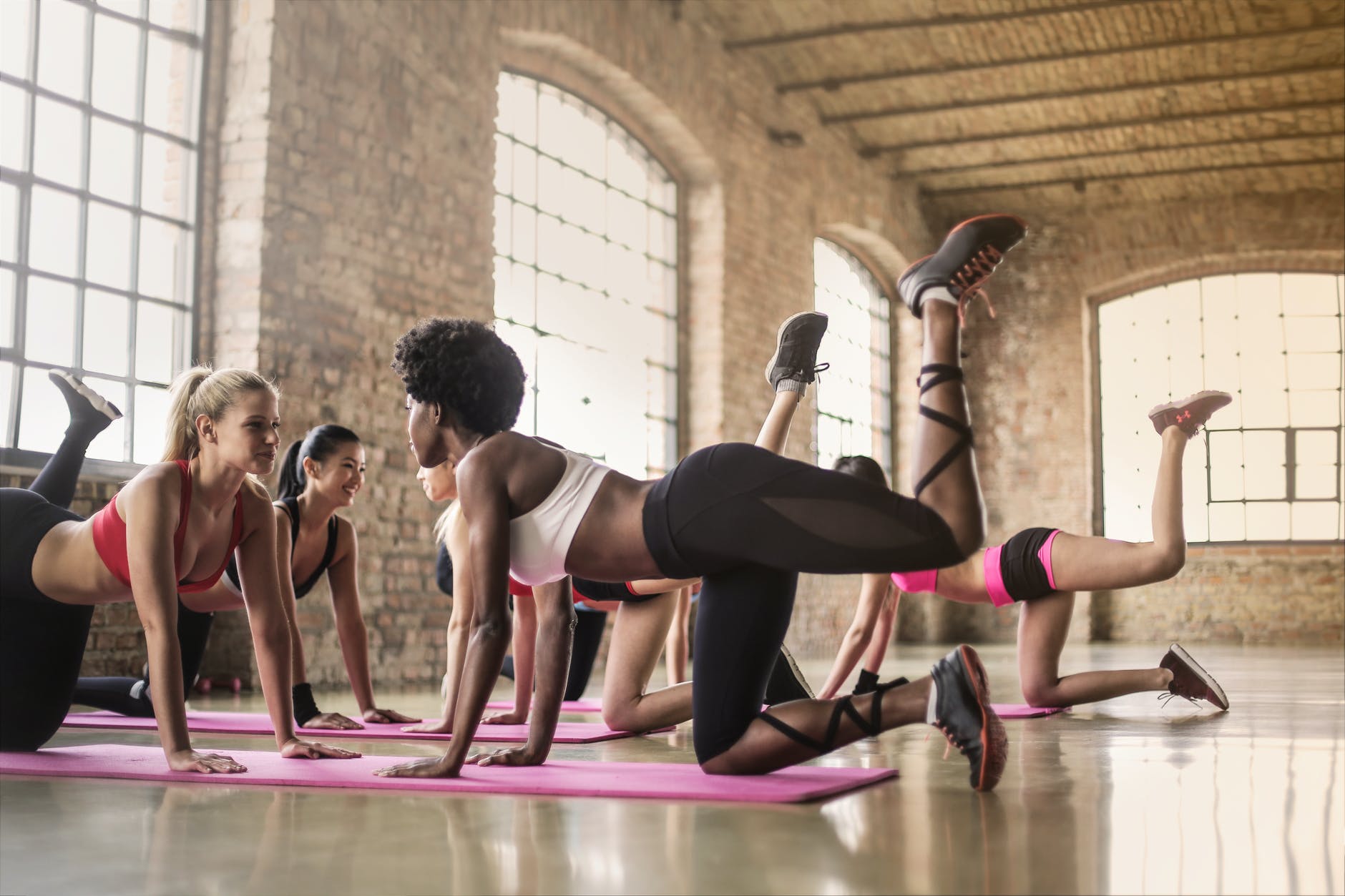
Again: group exercise classes have a laundry list of benefits. Unfortunately, efficiently transforming your body isn’t one of them
7) Avoid copying other “toned” women’s workouts
Many of these women look the way they do in spite of what they do, not because of what they do. And, unfortunately, many of them misrepresent what they do to make sales.
I see it all the time in this industry.
Influencers with massive followings do hard, effective strength training workouts behind closed doors—but do dainty, randomized workouts on social media to sell a “unique method” THEY DON’T ACTUALLY USE.
Look, the science is simple (no matter who claims otherwise): progressing on compound (multi-joint) exercises, like Presses, Rows, Squats, and Deadlifts, while prioritizing nutrition, sleep, and stress management is the “recipe” for a toned body—not a “band booty blaster” on Instagram.
8) Utilize progress overload
Now that you know to prioritize simple, effective strength training workouts, we need to talk about progressive overload: the magic progress elixir.
In simple terms, it’s doing more over time.
For example, going from 3×10 on DB Rows (with thirty pounds) to 3×12 on DB Rows (also with thirty pounds). That’s a one hundred and eighty pound increase and gives your body a reason to change.
If you avoid this, and use the same weights week after week—out of fear of “getting bulky,” or as a victim of poorly programmed, ineffective group exercise classes—you’re not setting yourself up for success.
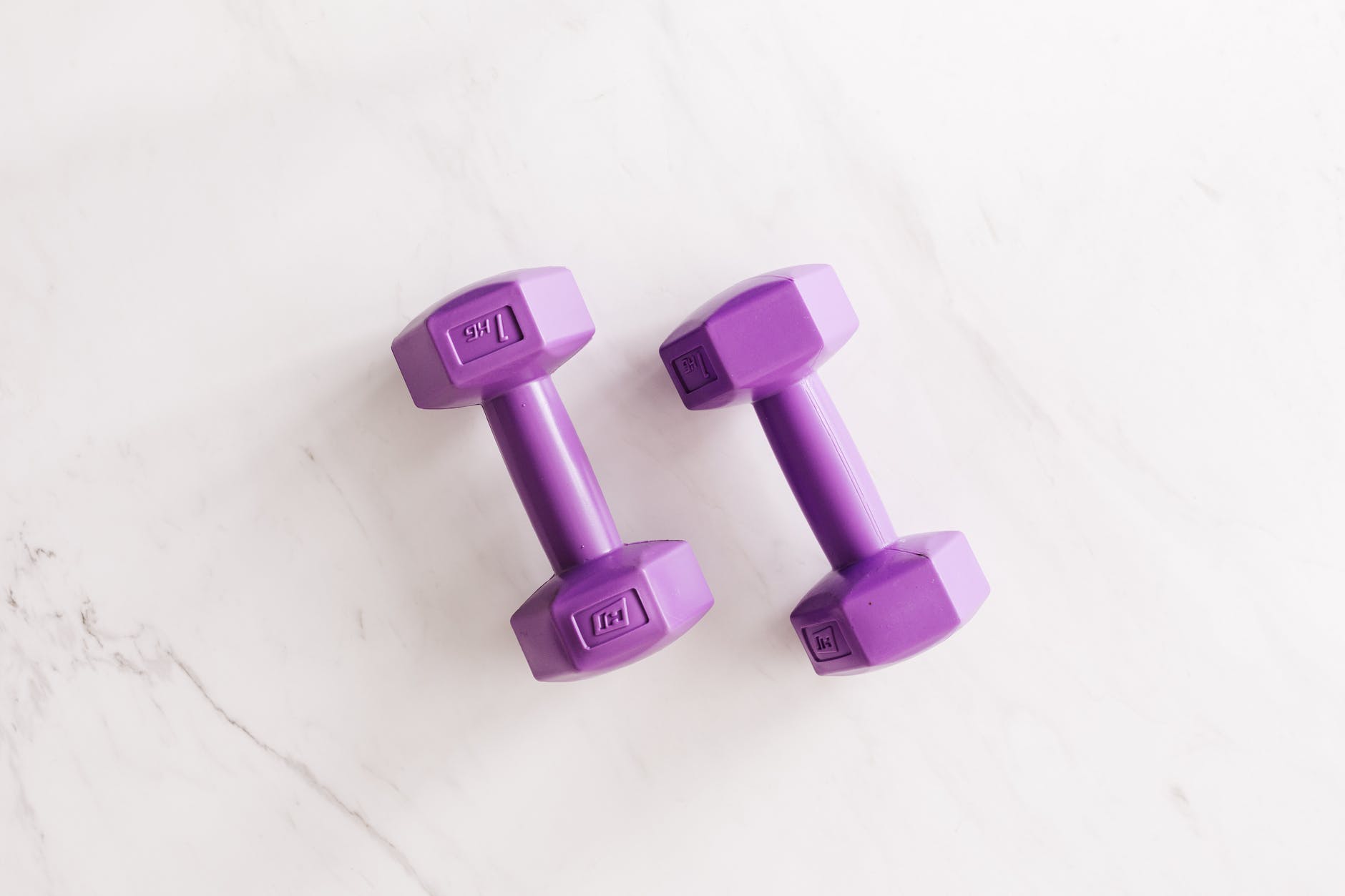
There’s only so much overload you can get with light weights
My most successful clients go as far as tracking their workouts so they know they’re doing more over time. They also maintain the same workouts for 6-8+ weeks at a time, because they work out for results… not entertainment.*
*Not-so-subtly talking to you, “I get bored easily” people.
9) Put more effort into your sleep
Remember: a toned look is achieved when muscle is developed and fat is lost.
Well guess what?
A 2010 study found that sleep deprivation reduced weight loss by 55% and muscle retention by 60%. In other words, if you blow off sleep, you’ll lose less weight, and more of the weight you lose will be muscle. This translates to a dramatically slower path toward success. For example:
A) Amy is 5’9” and 175 pounds at 30% body fat. She prioritizes sleep during her diet, and loses ten pounds: nine of which are fat (one is muscle). She’s now 165 pounds and 26% body fat.
B) Sally is 5’9” and 175 pounds at 30% body fat. She doesn’t prioritize sleep during her diet, and loses 4.5 pounds: 1.35 of which are fat (3.15 is muscle) She’s now 171.5 pounds and 29.8% body fat.
Imagine that?
At this rate, it might take Sally 3-5+ times longer to achieve the same results as Amy, all because she blew off her sleep habits and quality.
(Don’t be like Sally: review my step-by-step sleep guide HERE.)
10) Nail your nutrition
As much as food quality matters, fat loss nutrition largely boils down to (A) eating few enough calories* to lose weight—which is called a calorie deficit—and (B) eating enough protein to maintain muscle. I have entire articles on both subjects, but the TL;DR version is:
→ Eating ~10-12 times your bodyweight in calories (NOT 800-1,200 calories)
→ Eating .8 grams of protein per pound of bodyweight (more if you’re hungry)
If you’ve never counted calories, or have without success, give THIS step-by-step guide a read. If you struggle to get enough protein (as most people do), request a complimentary copy of the One-Stop Nutrition Guide, my BEST resource for women looking to increase intake without slugging shakes all day:
BONUS: Be dramatically more patient
There’s a reason I have 6+ month minimums on my programs (which most new clients feel is “a long time”): it takes a while to work out the kinks.
You may spend 1-3 months learning to track well. You may spend 6-12 months getting comfortable with strength training. You may spend YEARS repairing your relationship with diet and exercise.
And self-imposed deadlines make the process dramatically less enjoyable, sustainable, and effective. So however long you think this will take… double it.
Actually—triple or quadruple it.
Yes, you might reach your goals faster this—but in the more-than-likely chance you don’t, you won’t be so damn hard on yourself for being human.
Fair enough?
One last thing:
If you found this article helpful, I have a favor to ask: can you let me know your biggest takeaway? Or question after reading it?
Client or not, I’d love to to connect and help your transformation however I can. You’re welcome to reach out any time (HERE).


